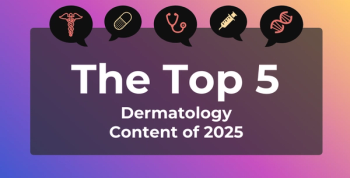
Cities That Will Fare the Worst Under the AHCA's Tax Credit Plan
The Republican healthcare law repeals several provisions in former President Barack Obama’s health law; however, while the GOP's American Health Care Act does provide financial assistance, similar to the Affordable Care Act (ACA), Americans will find that those dollars don’t go as far as they did under the ACA.
The Republican healthcare law repeals several provisions in former President Barack Obama’s health law, but like the Affordable Care Act (ACA), the GOP's American Health Care Act (AHCA) does provide financial assistance. However, Americans will find that those dollars don’t go as far as they did under the ACA.
One of the key differences in the financial assistance is how it is allotted. Under the ACA, subsidies were determined based on a number of things, including the cost of healthcare in the local market and how much an individual’s income could purchase. This meant that someone in Anchorage, Alaska, and someone in New York City could make the same income, but receive different subsidies: the person in Alaska would receive more because the market was more expensive.
However, under the AHCA, the tax credits are based on age. This means that the same 2 individuals could receive the same amount of money if they are the same age, providing a distinct disadvantage to the person living in Anchorage.
A
“If the goal of the AHCA is to increase access to affordable health insurance, at a minimum, the subsidies should be tied to income to better assist low-income and older people in being able to afford coverage…” Elena M. Marks, nonresident fellow in health policy at Baker Institute, told WalletHub for the report.
The ranking was created using data from the US Census Bureau and Kaiser Family Foundation.
10. Asheville, North Carolina
Subsidy Difference: —$4232
The median age in Asheville is approximately 38 years old, which means that the theoretical household being considered for this report would receive a $5000 tax credit. However, under the ACA, this household would have received a much larger subsidy: $9232.
In general, North Carolina doesn’t fare well. The state has another 2 cities that landed in the top 10, while another 2 landed at eleventh (Greensboro) and thirteenth (Winston-Salem).
9. Wichita Falls, Texas
Subsidy Difference: —$4434
Wichita Falls skews a little younger than Asheville with a median age of approximately 32 years. As a result, the household being considered would also receive $5000 despite the fact that under the ACA, it would have received $9434.
This is the only city in Texas in the top 10. Overall, 7 cities in Texas will see a reduction in subsidies received, while another 38 will see an increase under the AHCA.
8. Birmingham, Alabama
Subsidy Difference: —$4494
Yet another city that will go from more than $9000 in subsidies to just $5000. WalletHub’s
7. Fayetteville, North Carolina
Subsidy Difference: —$4687
The 2-person household being considered would have a median age of approximately 31 years, so it would receive $5000 under the AHCA, but was receiving $9687 with the ACA.
The 2017 Healthiest Cities in America report ranked Fayetteville low (117) among the healthiest cities in America. While it performed fairly well on the fitness of the city, it did not do well on food, which included fruit and vegetable consumption, healthy restaurants per capita, and share of obese residents. Nor did it rank well on healthcare, which considered factors such as mental health, family doctors per capita, cost of a medical visit, and the quality of the public health system.
6. Greenville, North Carolina
Subsidy Difference: —$5067
Greenville is a young city, with the median age of just 26 years, giving the theoretical 2-person household just $4000 in credits under AHCA. So even though this household was receiving $9067 under the ACA, which is less than the cities ranked 7 through 10, the subsidy difference is larger.
There is a total of 7 cities in North Carolina that landed in the top 20, while only 1 city will be better off under the AHCA. The 2-person household being considered would go from $0 subsidies under the ACA to $5000 under the Republicans’ plan. The median household income in Cary is $91,481 compared with a median household income in Greenville of just $35,225.
5. Chattanooga, Tennessee
Subsidy Difference: —$5786
Under the ACA, the theoretical household being considered would have received $10,786 in subsidies. However, under the new health plan, this household will only see a tax subsidy of $5000. The resident of Chattanooga will have trouble finding help getting healthy. WalletHub
Other Tennessee cities losing subsidies will fare better. The next city from Tennessee on the list is Memphis, which will have a much smaller reduction in subsidies: —$1826. Meanwhile, Murfreesboro, just an hour-and-a-half northwest, will actually see an additional $924 in subsidies.
4. Reading, Pennsylvania
Subsidy Difference: —$6149
With a median age of just about 29 years, the theoretical household being considered just missed out on a higher tax credit under AHCA. Instead, the household being compared will receive just $4000 compared with $10,149 under the ACA. The lower financial assistance will likely hurt. The median household income in Reading is just $26,531, which is down from $26,698 in 2000.
A nearby Pennsylvania city, Allentown, just missed out on the top 10, landing at number 12 with a subsidy difference of —$3714.
3. Syracuse, New York
Subsidy Difference: —$10,398
With a tax credit of just $4000, the household being considered would lose a substantial amount of money compared with the $10,398 tax subsidy it received under the ACA. Syracuse will fare far worse than other cities in New York state. The next city to land on WalletHub’s list is Rochester, which came in at 28 with a subsidy difference of just —$2276 and is located slightly more than an hour west of Syracuse.
Meanwhile, if this same 2-person household was in New Rochelle, New York, it would go from $0 under the ACA to $5000 under AHCA, for a substantial gain.
2. Anchorage, Alaska
Subsidy Difference: —$12,748
With an ACA subsidy of $12,748, Anchorage residents receiving financial help under the ACA are going to see a huge cut in assistance under the AHCA regardless of the age group.
Compared with Birmingham and Fayetteville, which also were ranked on the Healthiest Cities of America list, Anchorage did a lot better and
1. Yuma, Arizona
Subsidy Difference: —$12,815
According to the analysis from WalletHub, Yuma, Arizona, stands to fare the worst if the GOP repeals the ACA and implements the AHCA. The median age in Yuma is approximately 31 years, which means the report’s theoretical household only receives $5000 compared with $12,815 under the ACA.
The only good news for Yuma residents is that Arizona ranked fairly well for healthcare, according to the 2016’s States With the Best & Worst Health Care
Newsletter
Stay ahead of policy, cost, and value—subscribe to AJMC for expert insights at the intersection of clinical care and health economics.








